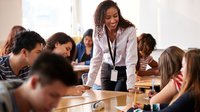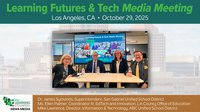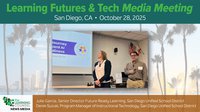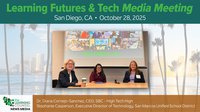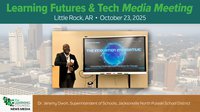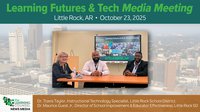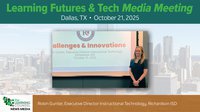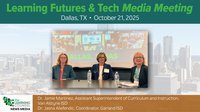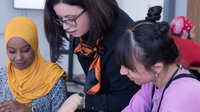In the evolving landscape of education, where the debate between knowledge-based and skill-based learning continues, Guided Discovery Learning (GDL) emerges as a transformative approach. This article delves into how GDL offers a balanced blend of structured knowledge acquisition and exploratory learning.
The Essence of Guided Discovery Learning
Guided Discovery Learning (GDL) is an innovative approach that resolves the long-standing educational dilemma between prioritizing knowledge or skills. As outlined in "What STEM Can Do for Your Classroom," GDL offers a balanced path, integrating the structured guidance of traditional teaching with the creative exploration of Project-Based Learning (PBL). This method empowers learners to explore and discover autonomously while ensuring they are grounded in essential knowledge. It caters to the evolving needs of education, promoting a dynamic environment where students are actively engaged, collaborating, and innovating.
Implementing GDL involves four crucial steps:
- Create a Shared Goal: Setting a clear objective aligns students and teachers.
- Foreground Essential Knowledge: Direct instruction establishes foundational understanding.
- Check for Understanding: Formative assessments gauge and support comprehension.
- Allow Independent Application: Gradual withdrawal of scaffolding enables autonomous application of concepts.
The Role of Partial Scaffolding
Partial scaffolding, a fundamental aspect of GDL, bridges the gap between guided instruction and discovery-based learning. Introduced by Puntambekar and Hubscher, this approach involves providing learners with necessary supports at the beginning of their educational journey and gradually withdrawing these supports as they advance. This methodical fade of scaffolding is not merely a reduction of aid but a deliberate transition from guided learning to independent exploration and application. It underpins the GDL framework by fostering learner autonomy and enabling students to apply their understanding in diverse, real-world contexts.
Guided Discovery Learning in Action
In a bustling middle school classroom, the air was charged with excitement. Today was not just another day of learning; it was the day of the in-class robotics competition. Mrs. Parker, the robotics teacher, had planned a lesson steeped in the principles of GD, aiming to teach her students about the intricacies of robotic drivetrains through a hands-on experience.
As the class settled, Mrs. Parker initiated the lesson with a demonstration. She showcased a robot expertly navigating an obstacle course, scoring points with precision. "Notice the robot's movements," she pointed out, "How smoothly it turns, the speed it maintains. Today, we will explore how different drivetrain designs can impact a robot's performance in a competition like this."
The room buzzed with murmurs of intrigue as Mrs. Parker transitioned to the direct instruction phase. She displayed various drivetrain models, each with its unique trade-offs. "Some designs offer speed but less control, while others provide stability but at a slower pace," she explained. The students, with eyes wide, absorbed every detail, understanding that these choices would significantly impact their robots' performance.
"Alright, teams," Mrs. Parker announced, "it's time to put theory into practice." The students, grouped into teams, began to work on their robots, creating and testing different drivetrain designs. Over the next few days, the classroom transformed into a vibrant workshop, with students exchanging ideas, making decisions, and documenting their progress in their engineering notebooks. Mrs. Parker walked among the teams, observing and occasionally guiding, but mostly letting the students discover the effects of their design choices firsthand.
As robots took tentative first moves, some zipped across the floor, while others maneuvered with more deliberate, controlled motions. Each trial run offered valuable insights, and students eagerly noted these observations in their notebooks. This phase of formative assessment was crucial - it was not just about the robots' performance but also about how students processed and learned from each experience.
Soon, the practice sessions turned into mini-competitions, with teams testing their robots against each other. This peer-to-peer interaction served as another layer of formative assessment. Students learned from watching each other's designs in action, gaining insights that could not be gleaned from solo trials alone.
As the classroom competition neared, Mrs. Parker's role subtly shifted. The scaffolding she provided through guidance and instruction receded, giving way to student autonomy. The teams were now making collaborative decisions, adjusting and improving their robots based on the knowledge and experience they had gathered.
Finally, the classroom competition commenced. Mrs. Parker watched proudly as her students took full charge, running the event with enthusiasm and expertise. The robots, each reflecting a unique design philosophy and the hard work of the teams, competed fiercely. Cheers and applause filled the room as points were scored, and gentle consolations were offered for near misses.
In the end, while one team emerged victorious in terms of points, every student left the class a winner, having experienced the power of learning through discovery. They had not just built robots; they had built confidence, collaborative skills, and a deeper understanding of robotics.
Mrs. Parker concluded the lesson with a reflective discussion, encouraging students to share their experiences and learnings. As the students spoke, it was clear that the lesson had transcended the boundaries of robotics; it had become a lesson in critical thinking, teamwork, and the joy of discovery.
Guided Discovery Learning promises an engaging, empowering, and enlightening educational journey. It navigates students from structured to unstructured learning, from the known to the unknown, offering an experience that is not just acquired but deeply felt and understood.
About the author
Jason McKenna is an experienced educator and author of What STEM Can Do for Your Classroom: Improving Student Problem Solving, Collaboration, and Engagement, Grade K-6. As the Vice President of Global Education Strategy for VEX Robotics, he specializes in curriculum development and global educational strategy, focusing on STEM integration and 21st-century learning. His work involves engaging with educators and policymakers worldwide.


